Location: 18th Venice Architecture Biennale 2023 Korean Pavilion, Giardini, Venezia, Italy
Program: 2086 / Together How
Status: Participating Artists / Urban Terrains Lab, SoA, N H D M
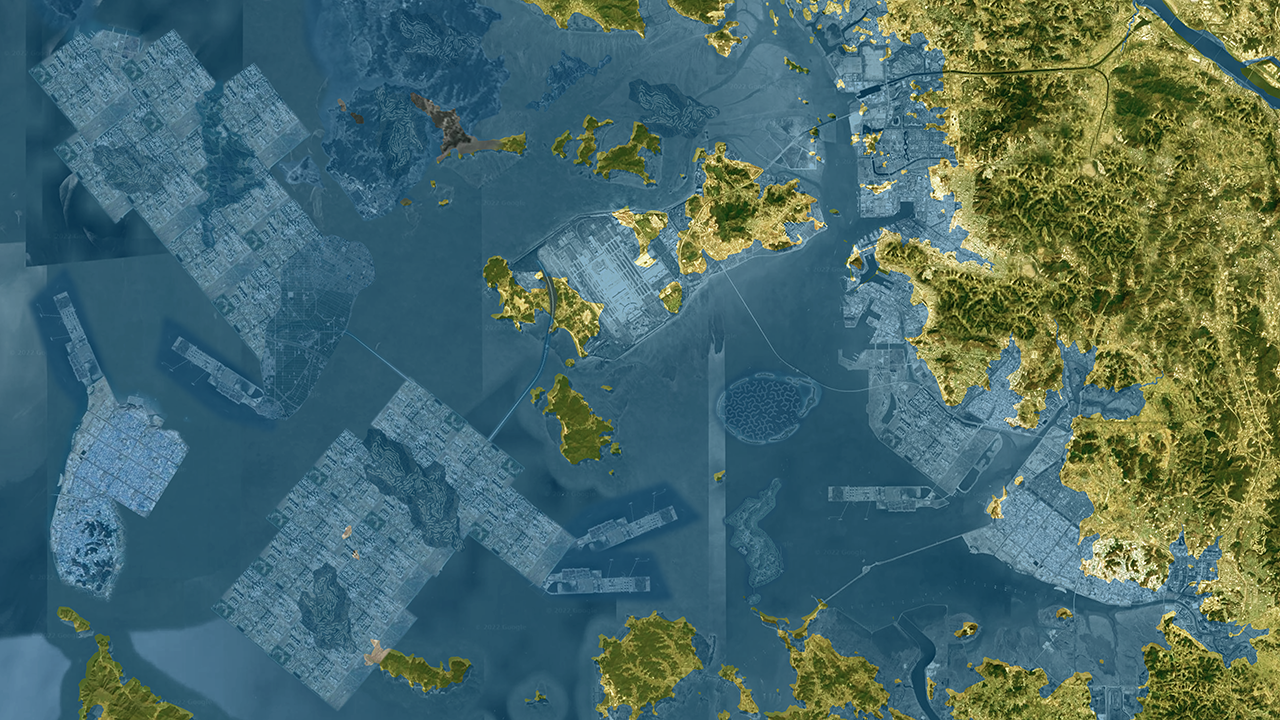
/
“In the epoch of the Anthropocene the Humans and the Earthbound would have to agree to go to war.”[1]
We define Baedari, in East Incheon of the Republic of Korea (ROK), as a site of apocalyptic war. It is a site torn between and the raw, primal desire to remain Earthbound.
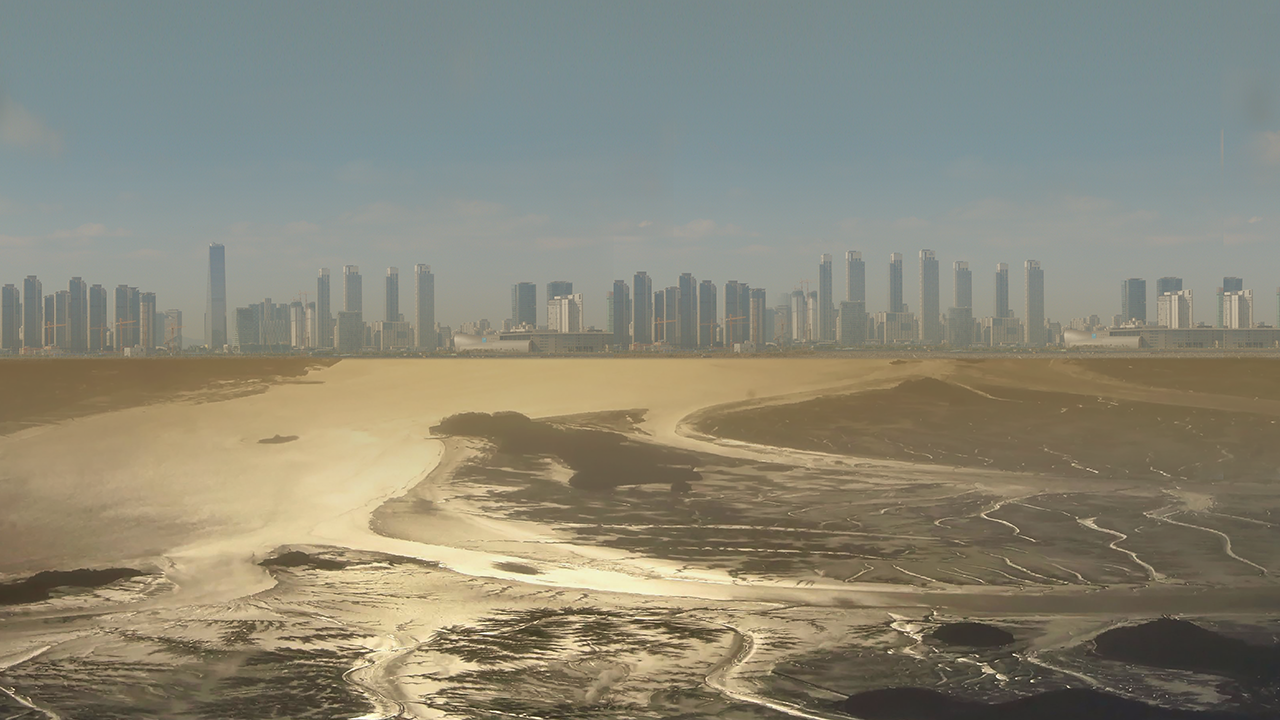
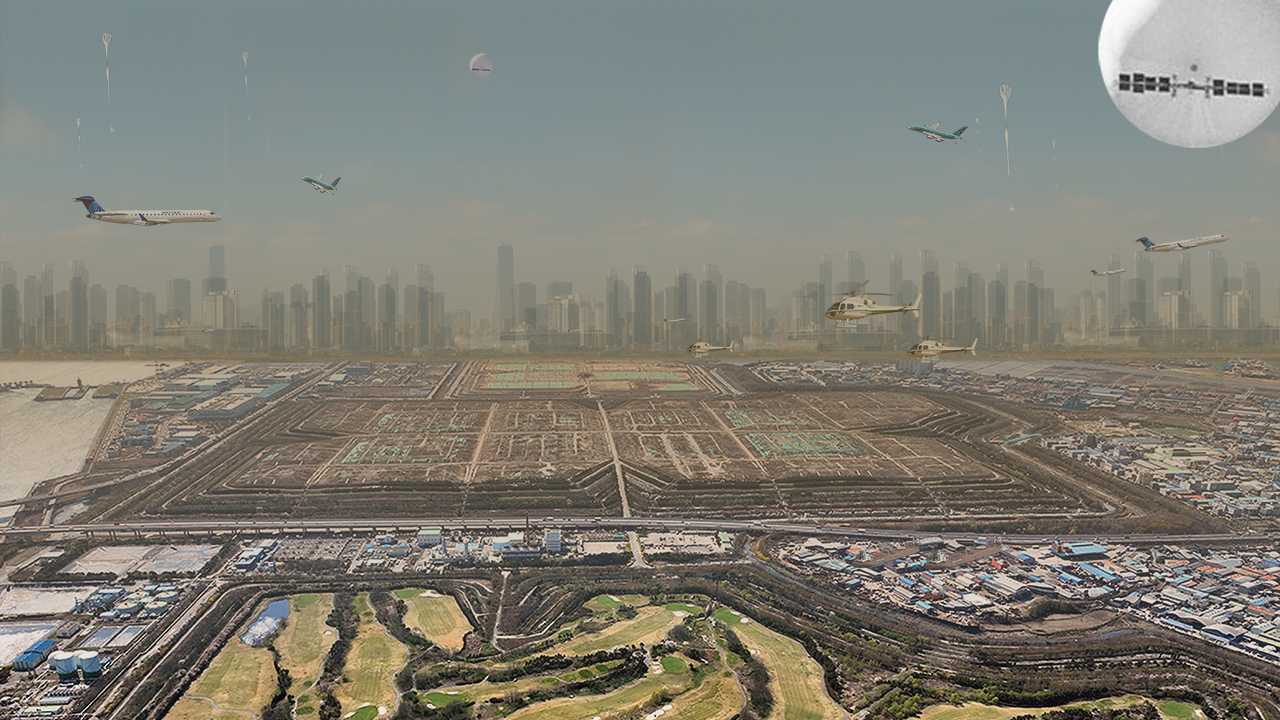
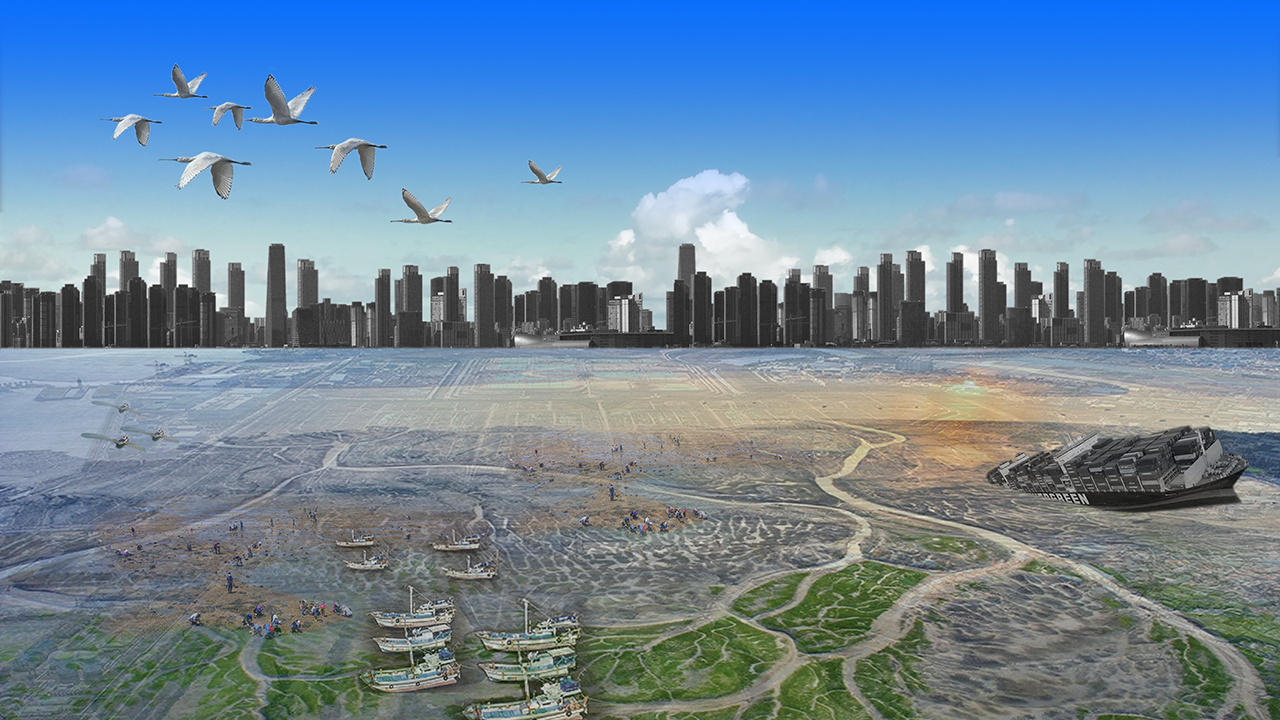
Incheon is a city inundated with the desire for growth. As a coastline city with 13.5% of its land “created” from the marshlands through landfill reclamation, it has become a site for megadevelopment projects such as the Incheon Free Economic Zone, Songdo International Business District, Cheongna International City, and Yeongjong International City, easy vehicles for gaining political and financial power. The necessary clearance and development are justified under the rubrics of economic growth and urban renewal. Planned obsolescence, which promises endless cycles of construction and destruction, is the growth machine’s objective. Buildings only 20–30 years old are defined as “old and dilapidated” and qualify for redevelopment.[2] In the old urban center of the East Incheon area, 80–85% of building stocks are already “obsolete.”
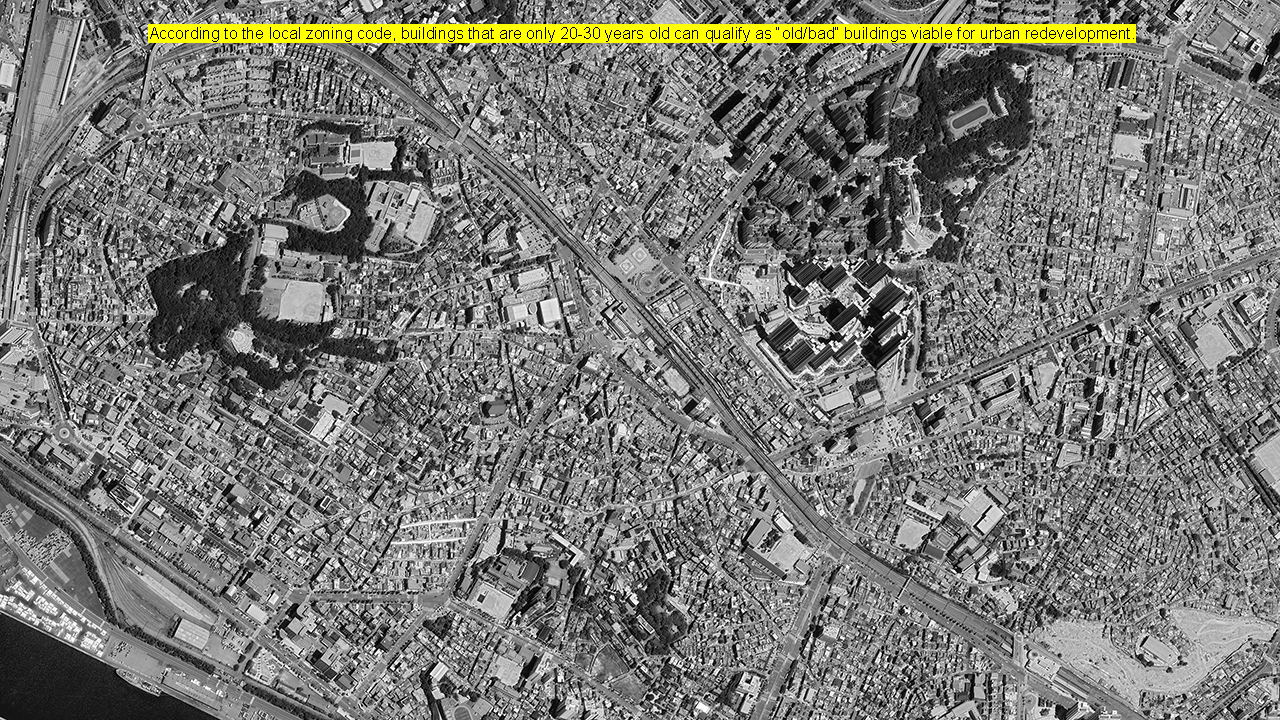
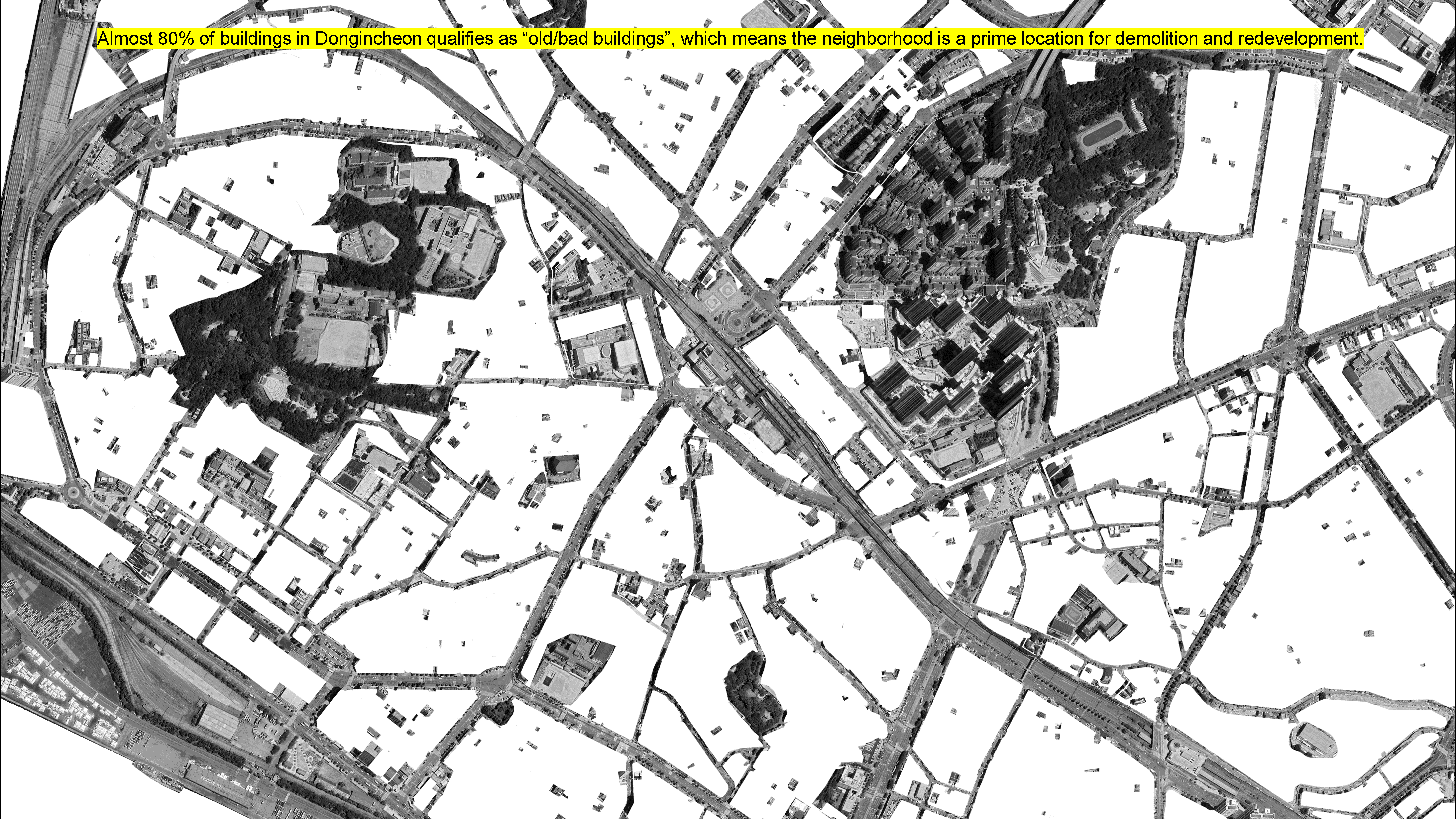
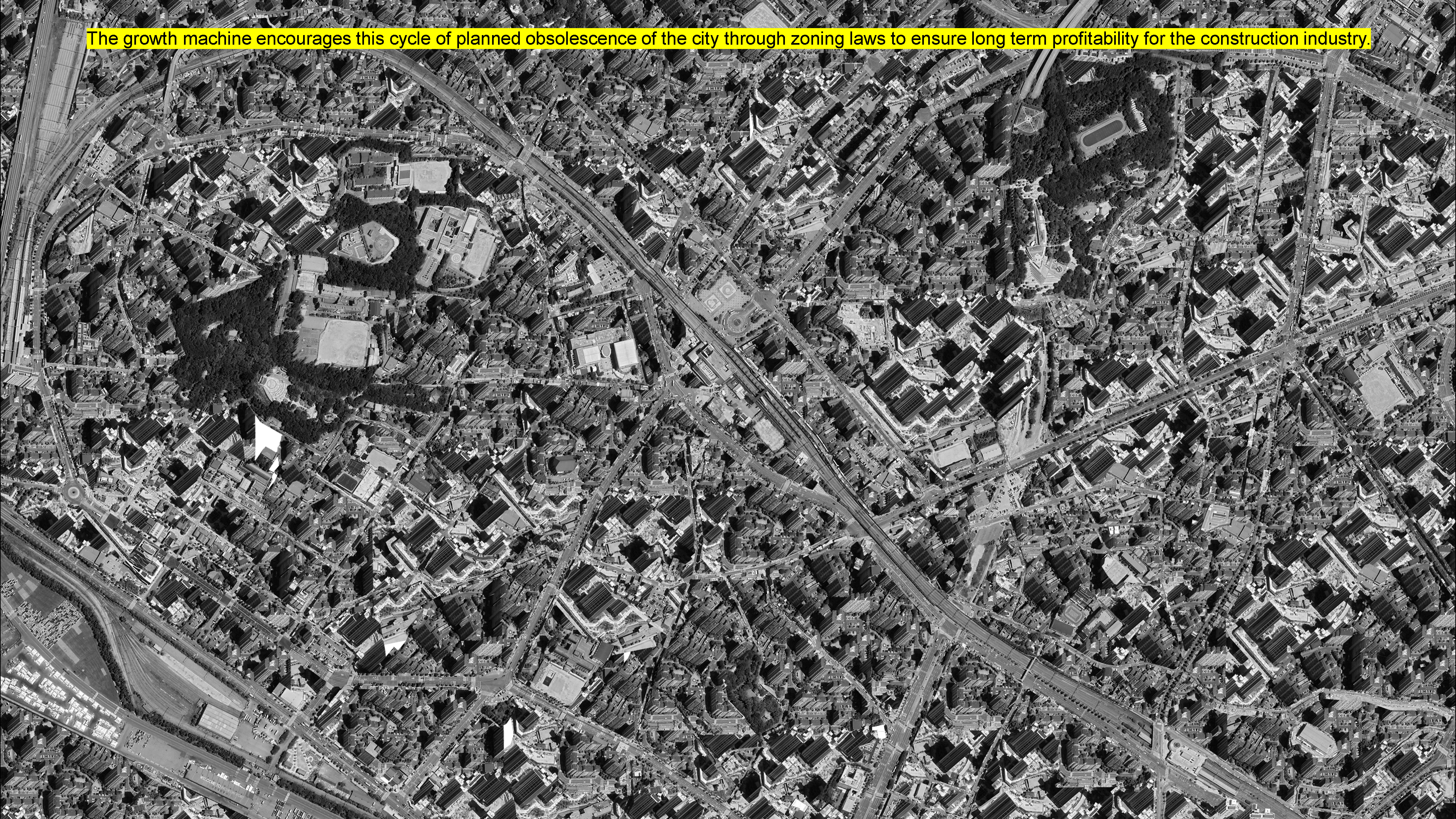
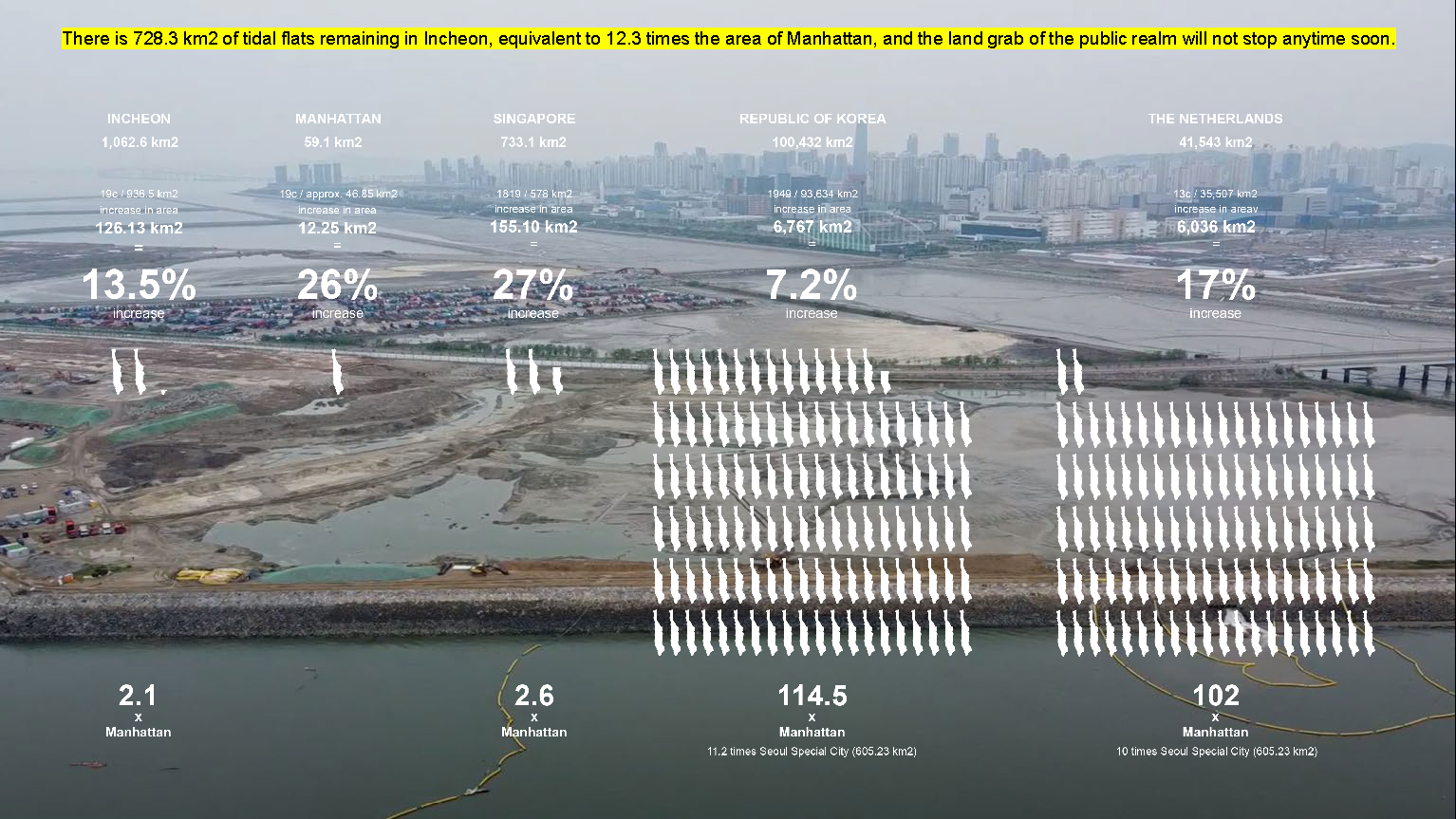
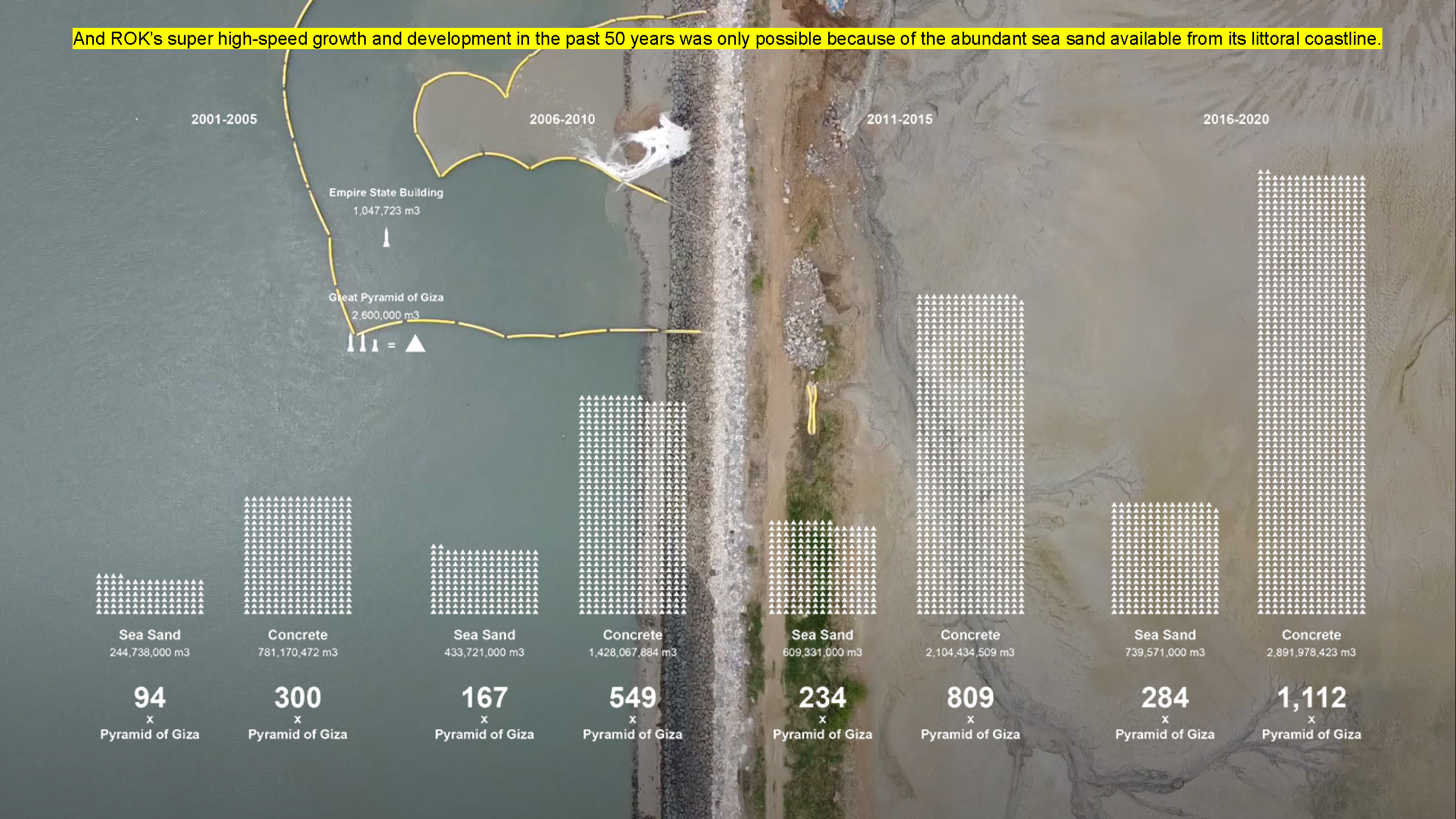
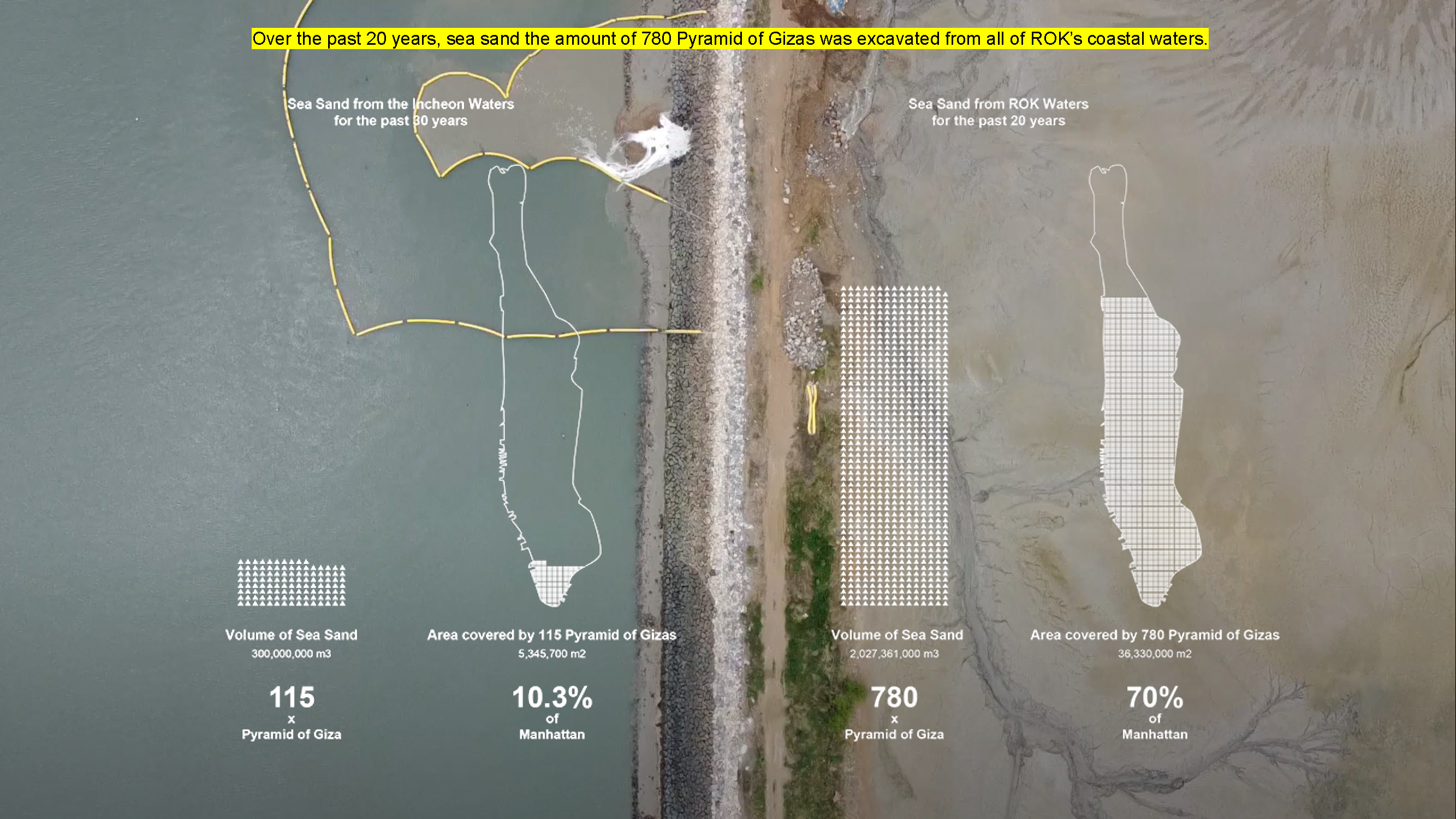
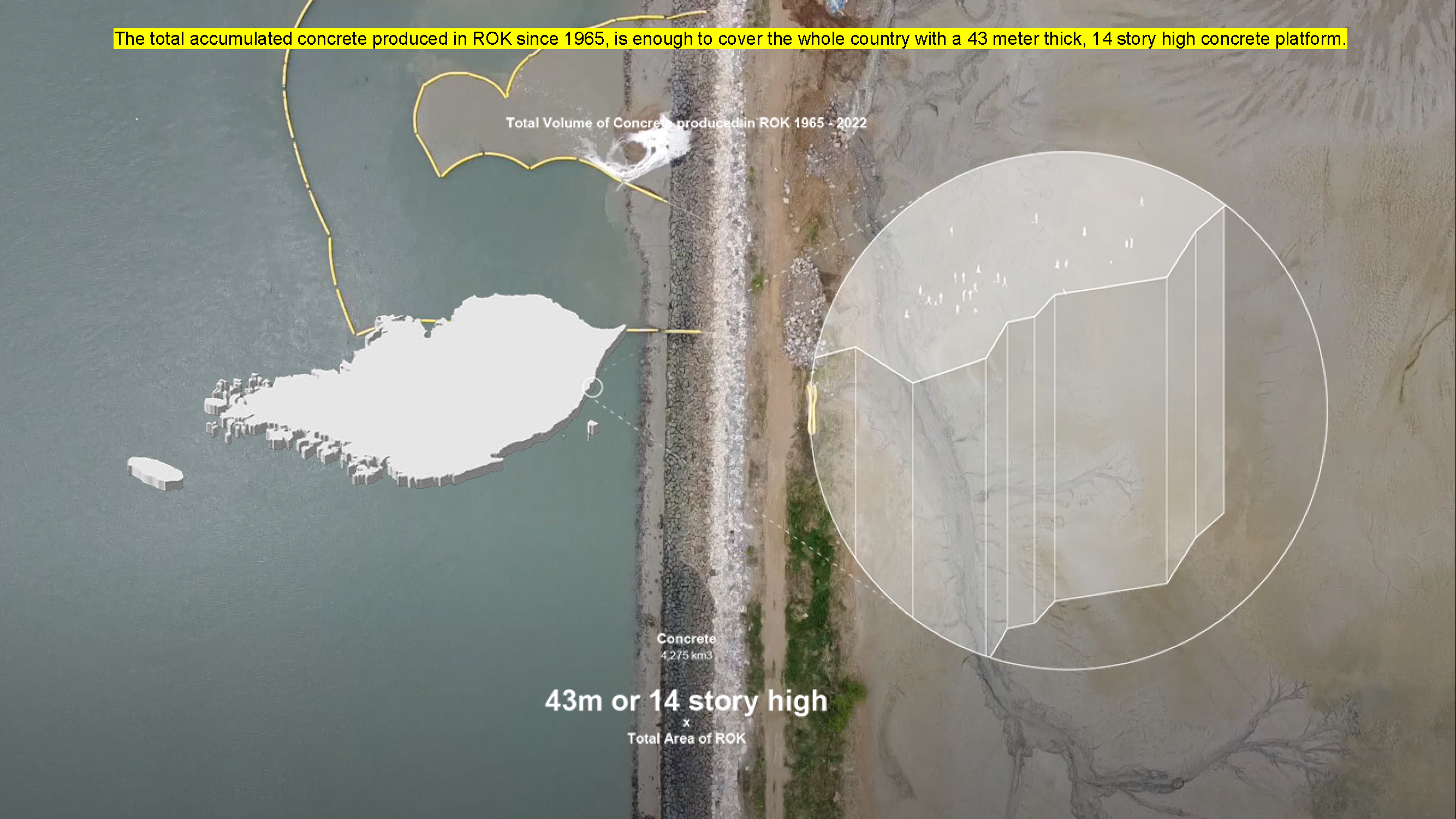
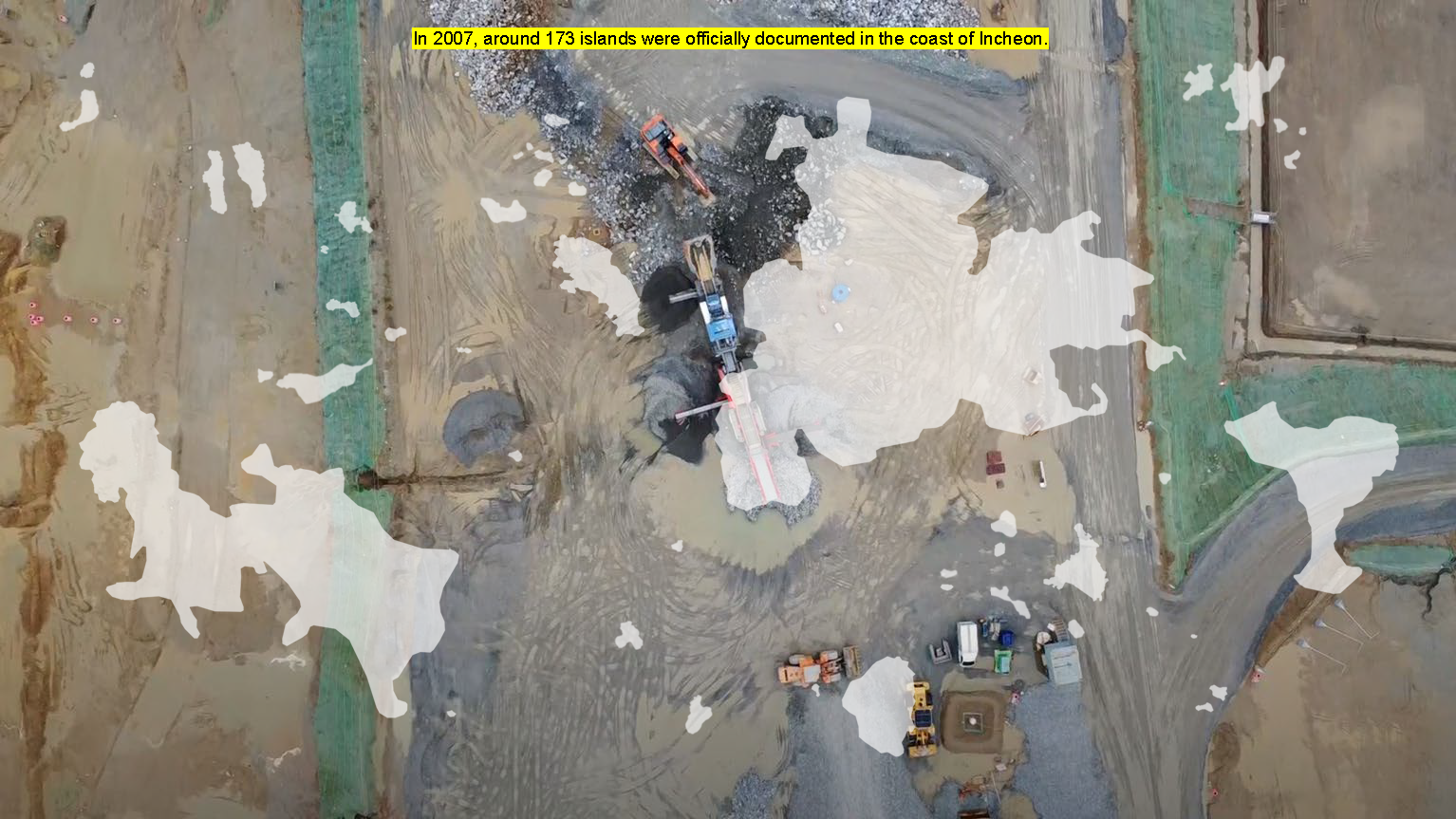
But under the blind wheel of growth, which is fueled by an insatiable hunger for power and wealth, lies the ongoing battleground of the urban underclass and the marginalized. They are continuously squeezed, dispossessed, and spit out by the unrelenting powers of development. Cho Se-hŭi’s 1978 depiction of the ravaged city still holds true today: “Those who dwell in heaven have no occasion to concern themselves with hell. But since the five of us lived in hell, we dreamed of heaven: not a day passed without thoughts of heaven. Each and every day was an ordeal. Our life was like a war. Everyday we lost a battle.”[3]
Promises of growth and prosperity in Incheon are mere simulacra. In terms of economic growth rate, Incheon in 2020 was ranked only 14th out of 17 cities in the ROK[4], and in 2021, the average yearly salary level was ranked as one of the lowest.[5] The national stress level index was highest, and satisfaction with quality of life in the environmental category ranked the lowest.[6] [7] and trust in public officials in Incheon is rated the lowest in the country.[8] As per Cho Se-hŭi, [9]
What happened in Baedari was nothing out of the ordinary. The government announced plans for a major highway connection between the new Songdo and Cheongna cities, and the subsequent land grabs in the old low-income neighborhood, followed by hushed compensation, made way for the erasure of a neighborhood. But what is extraordinary is that the community declared war. Those who desired to remain and bind themselves to the land and their homes decided to stand together and declare the government as their enemy. They cultivated the land, their lives, and their homes and encouraged others to do so through “co-immunism”[10] and “making-with”[11] and “love.”[12] The illusion of growth was clear to them. So instead, they decided to manage decay.[13] . Humans and nonhumans formed an organic community so they could make-with as odd-kins. And the old and the dilapidated, whether organic or inorganic, were cared for with love.
The people and place of Baedari embody the possibilities of an Earthbound way of life. As Latour implores, the war is here already, and the choice must be made: remain as Humans in the Holocene or become Earthbound “as artisans of peace”[14] in the Anthropocene. Architecture must also make a choice.
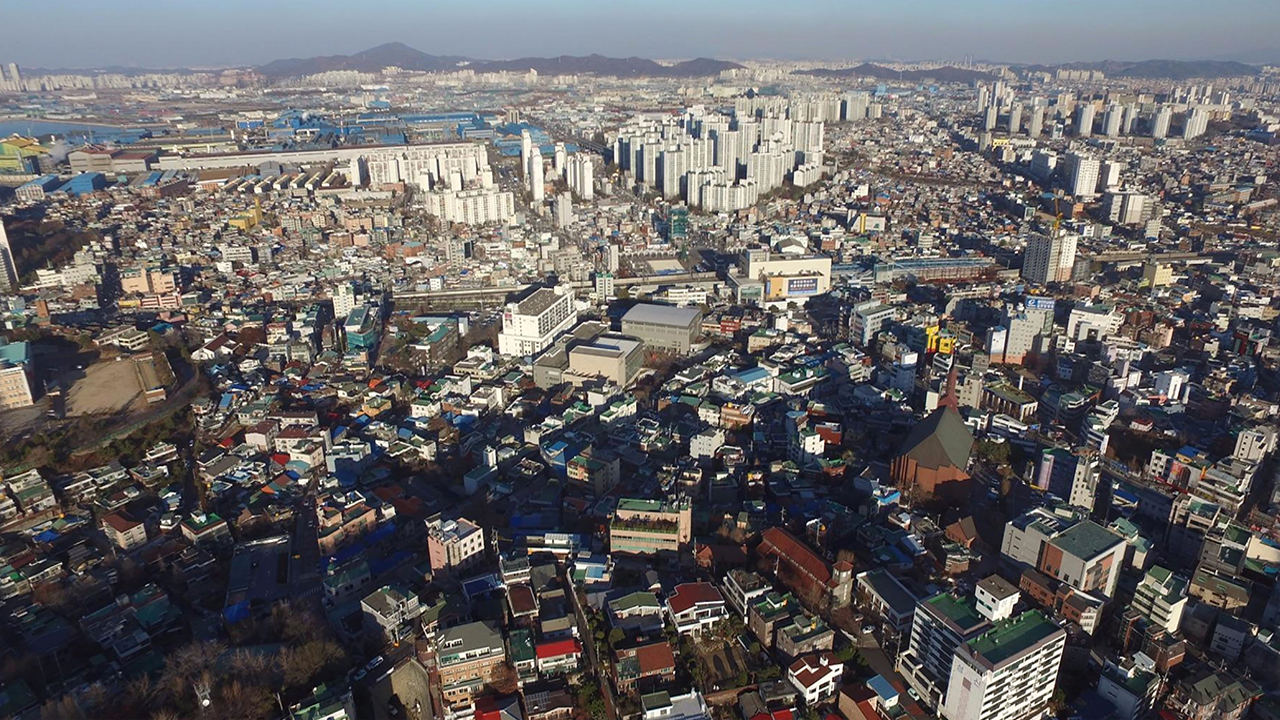
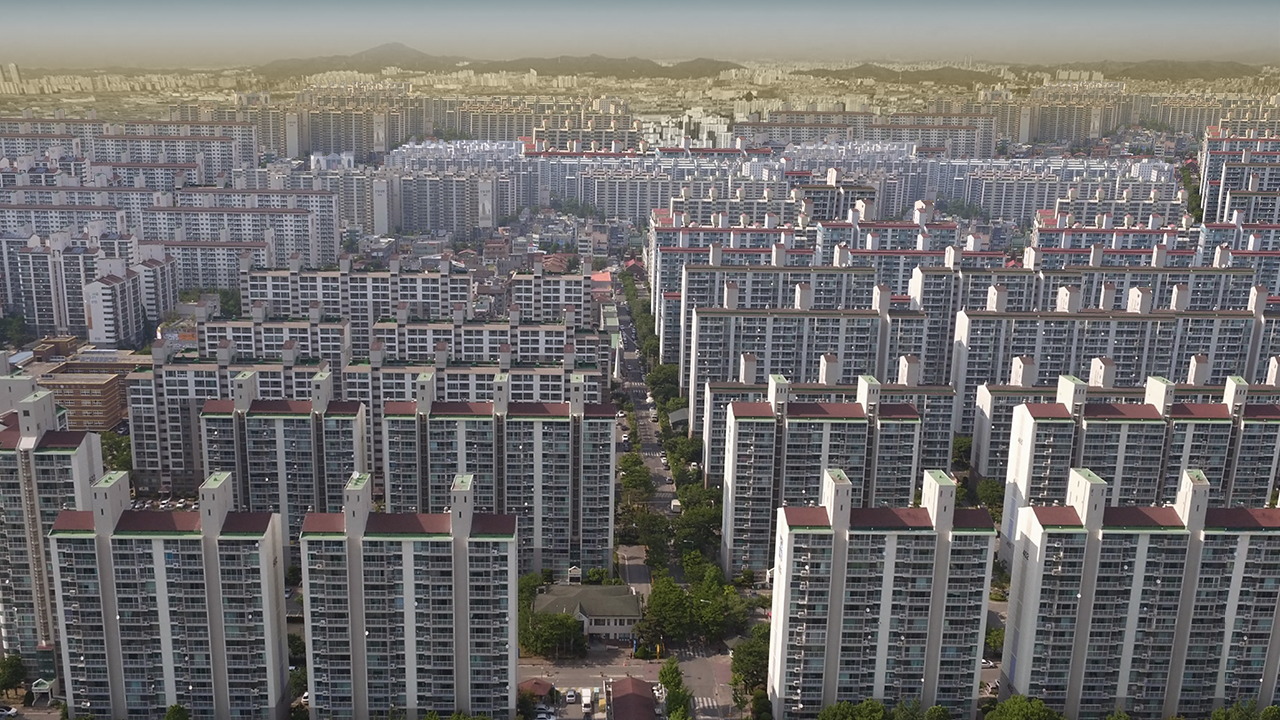
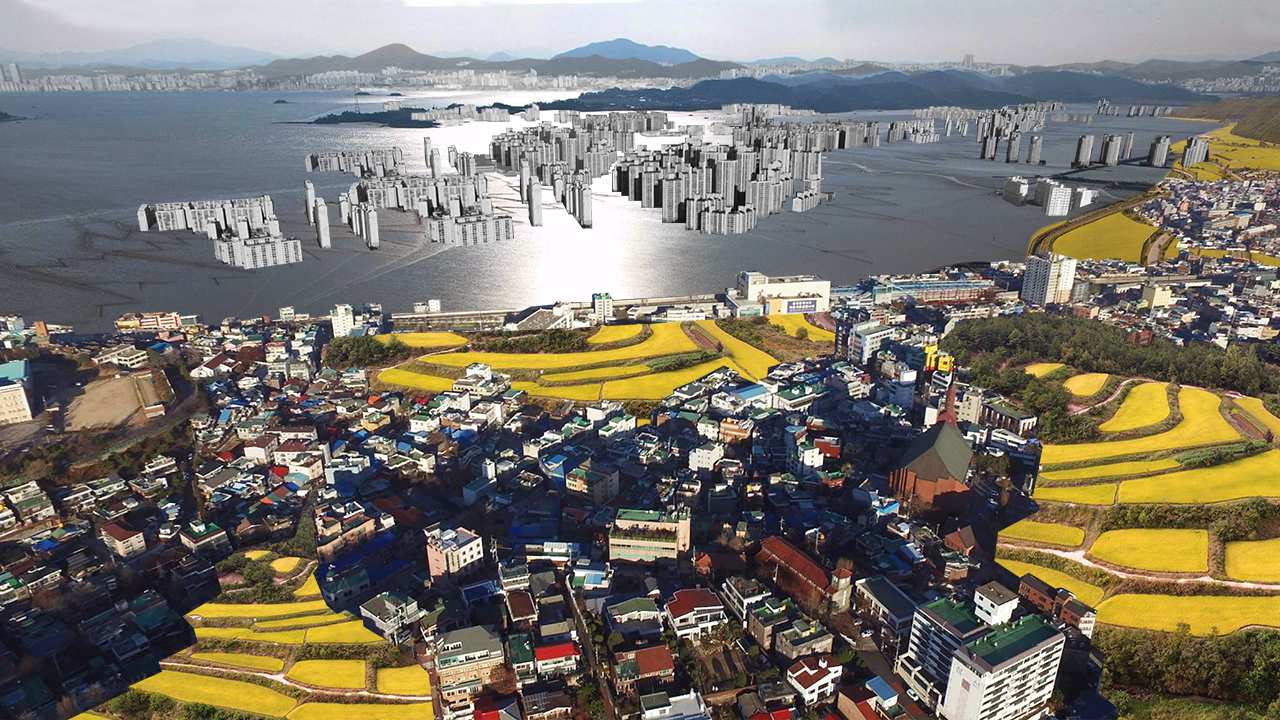
/
In 1968, Arata Isozaki’s “Electric Labyrinth” exhibition questioned the role of architecture relative to the horrors and devastations of war: “On the large panel ruined structures of a future city were montaged on the scorched earth of Hiroshima… A proposal advanced in order to be realized is always under the threat of an extinction much like Hiroshima’s. Only when we realize that construction and destruction, planning and extinction are synonymous can meaningful spaces that are in touch with reality come into being.”
RFFR is an attempt to overlay the troubled anxiety portrayed by Isozaki onto the war zone that is East Incheon. As the ruins and devastation of Hiroshima render the futuristic proposals of the Metabolists a travesty,[16] the megadevelopment proposals of Incheon also lie brazen and futile. As Isozaki states, “(a) ruin is the future of our city, and the future city is ruin itself.”[17]
RFFR proposes the ruin as a site of fresh things, rotting things, and preserved things commingling with possibilities. It is a world of humans and nonhumans, organic and inorganic, matter and nonmatter fermenting into a pile of compost. No matter how nihilistic architecture can be, embracing the cycle of life and death is inherently hopeful and positive. And the Earthbound of Baedari offer architecture a mode of action, as long as we can be cautious as the ‘angel of history.’
“His face is turned toward the past. Where we perceive a chain of events, he sees one single catastrophe which keeps piling wreckage upon wreckage and hurls it in front of his feet. The angel would like to stay, awaken the dead, and make whole what has been smashed. But a storm is blowing from Paradise; it has got caught in his wings with such violence that the angel can no longer close them. This storm irresistibly propels him into the future to which his back is turned, while the pile of debris before him grows skyward. This storm is what we call progress.”[18]
Reference
[1] Bruno Latour, “Seventh Lecture: The States (of Nature) between War and Peace,” in Facing Gaia: Eight Lectures on the New Climate Regime, trans. Catherine Porter (Cambridge, UK: Polity, 2017). Kindle edition.
[2] “도시 및 주거환경정비법 제2조” [Urban and Housing Environment Renewal Development Act, Article 2], accessed February 15, 2023, https://www.law.go.kr/lsSc.do?section=&menuId=1&subMenuId=15&tabMenuId=81&eventGubun=060101&query=%EB%8F%84%EC%8B%9C%EC%A0%95%EB%B9%84%EB%B2%95#undefined.
[3] Cho Se-hŭi, “A Dwarf Launches a Little Ball,” in Modern Korean Literature: An Anthology, ed. Peter H. Lee, trans. Chun Kyungja (Honolulu: University of Hawaii Press, 1990), 328.
[4] 국가통계포털 [Korean Statistical Information Service], accessed October 12, 2022, https://kosis.kr/index/index.do.
[5] “2021 국세통계연보” [2021 National Tax Statistical Yearbook], National Tax Service, accessed October 12, 2022, https://nts.go.kr/nts/na/ntt/selectNttInfo.do?nttSn=1301095&mi=2201.
[6] 국가통계포털 [Korean Statistical Information Service].
[7] “인천지역 내 군·구별 성장불균형 현황 및 시사점(요약)” [Notes on the Developmental Imbalance of Incheon Region Gu, Gun Districts (Brief)], Addendum, June 22, 2022, 한국은행 인천본부 [Bank of Korea Incheon Station], accessed October 12, 2022, http://www.bok.or.kr.
[8] 국민권익위원회 [Anti-Corruption & Civil Rights Commission], accessed February 15, 2023, https://www.acrc.go.kr/board.es?mid=a10106000000&bid=36&&act=view&list_no=43816.
[9] Cho, “A Dwarf Launches a Little Ball,” 341.
[10] Peter Sloterdijk, Foams: Spheres Volume III: Plural Spherology, trans. Weiland Hoban (Cambridge, MA: MIT Press, 2016)
[11] Donna Haraway, Staying with the Trouble: Making Kin with the Chthulucene (Durham: Duke University Press, 2016), Kindle edition.
[12] Michael Hardt and Antonio Negri, Multitude: War and Democracy in the Age of Empire (New York: Penguin Books, 2004), 351–357.
[13] Kevin Lynch, introduction to Wasting Away, An Exploration of Waste: What It Is, How It Happens, Why We Fear It, How to Do It Well (San Francisco: Sierra Club, 1990).
[14] Carl Schmitt, The Nomos of the Earth in the International Law of the Jus Publicum Europaeum, trans. G. L. Ulmen (New York: Telos Press, 2003).
[15] Arata Isozaki, “Electric Labyrinth ‘14th Triennale di Milano,’” in Unbuilt (Tokyo: Gallery-MA, 2001), 110–111, exhibition catalog.
[16] Jin Baek, “MUJO, OR EPHEMERALITY: the Discourse of the Ruins in Post-War Japanese Architecture,” Architectural Theory Review 11, no. 2 (2009): 66–77.
[17] Arata Isozaki, “Incubation Process,” in Unbuilt (Tokyo: Gallery-MA, 2001), 47, exhibition catalog.
[18] Walter Benjamin, “Theses on the Philosophy of History,” in Illuminations: Essays and Reflections (1968), 257–258.
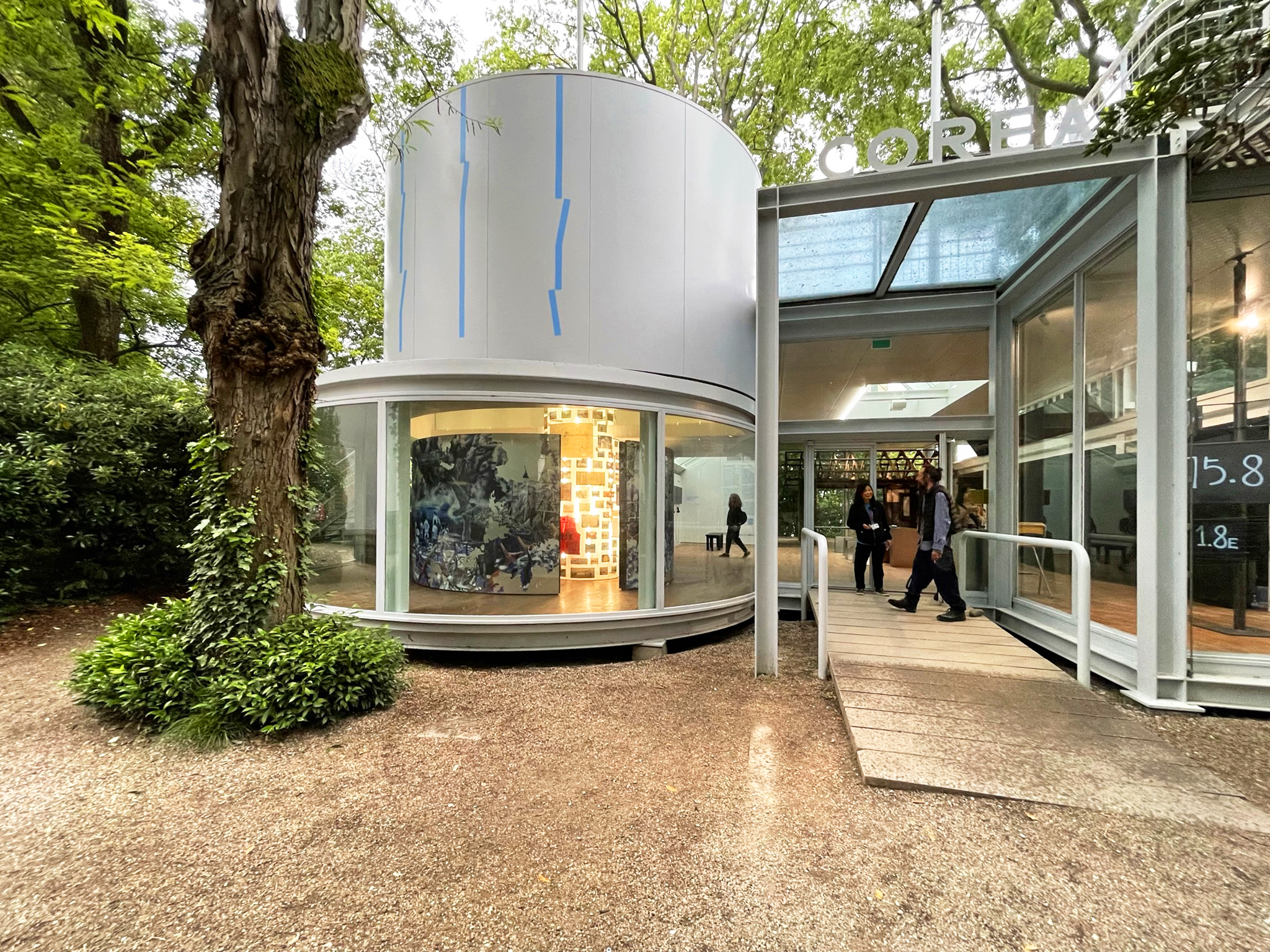
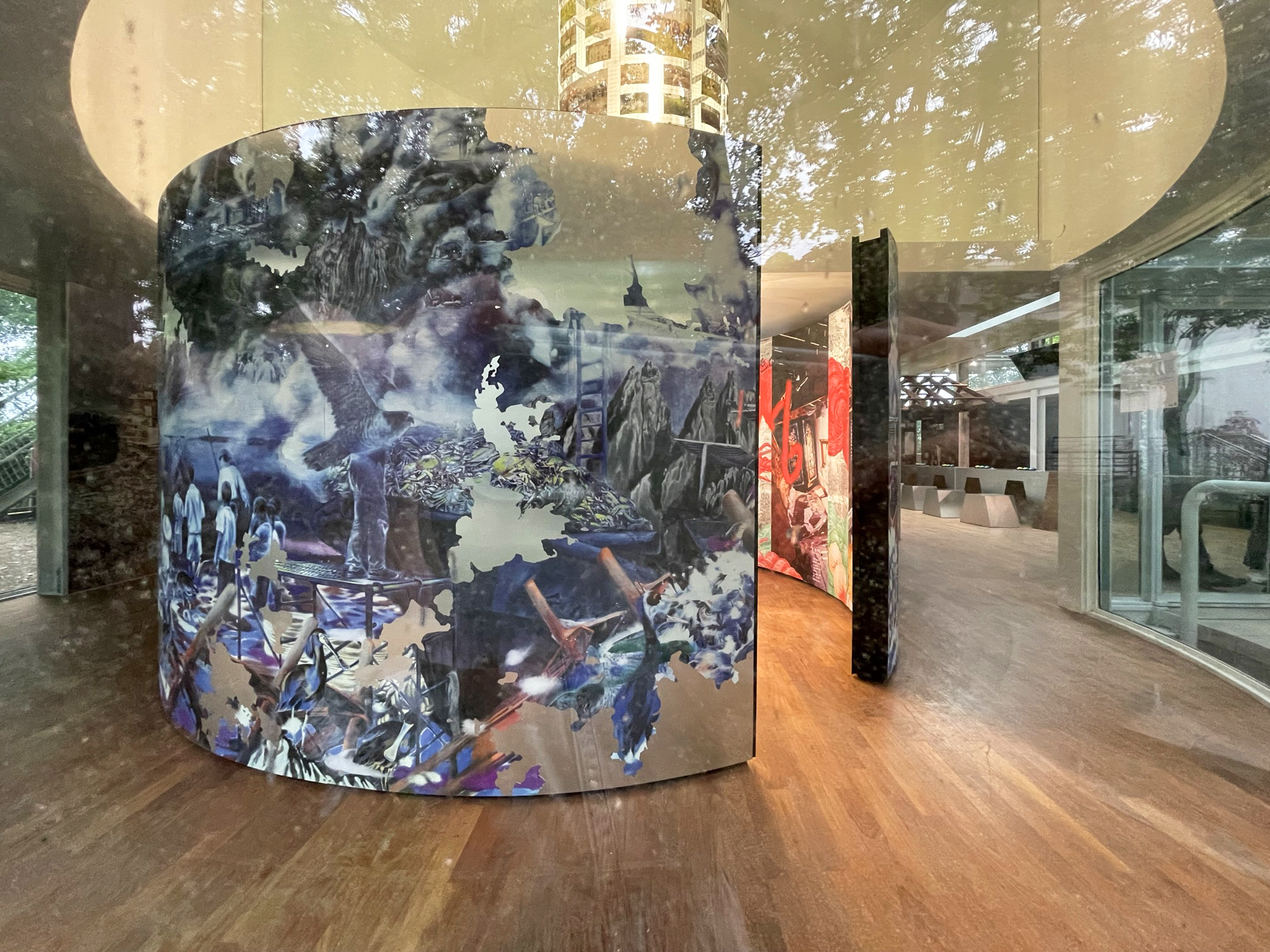
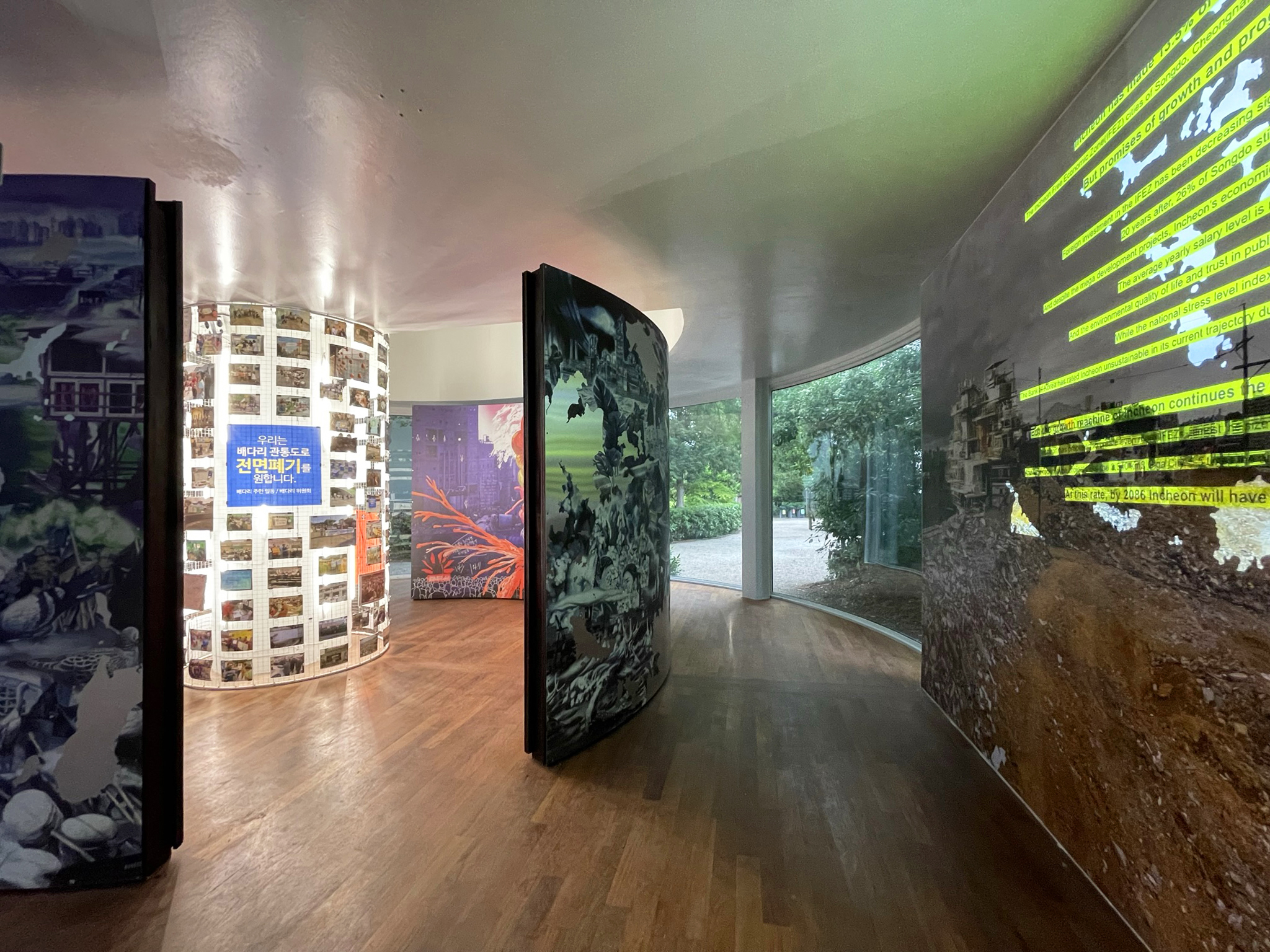
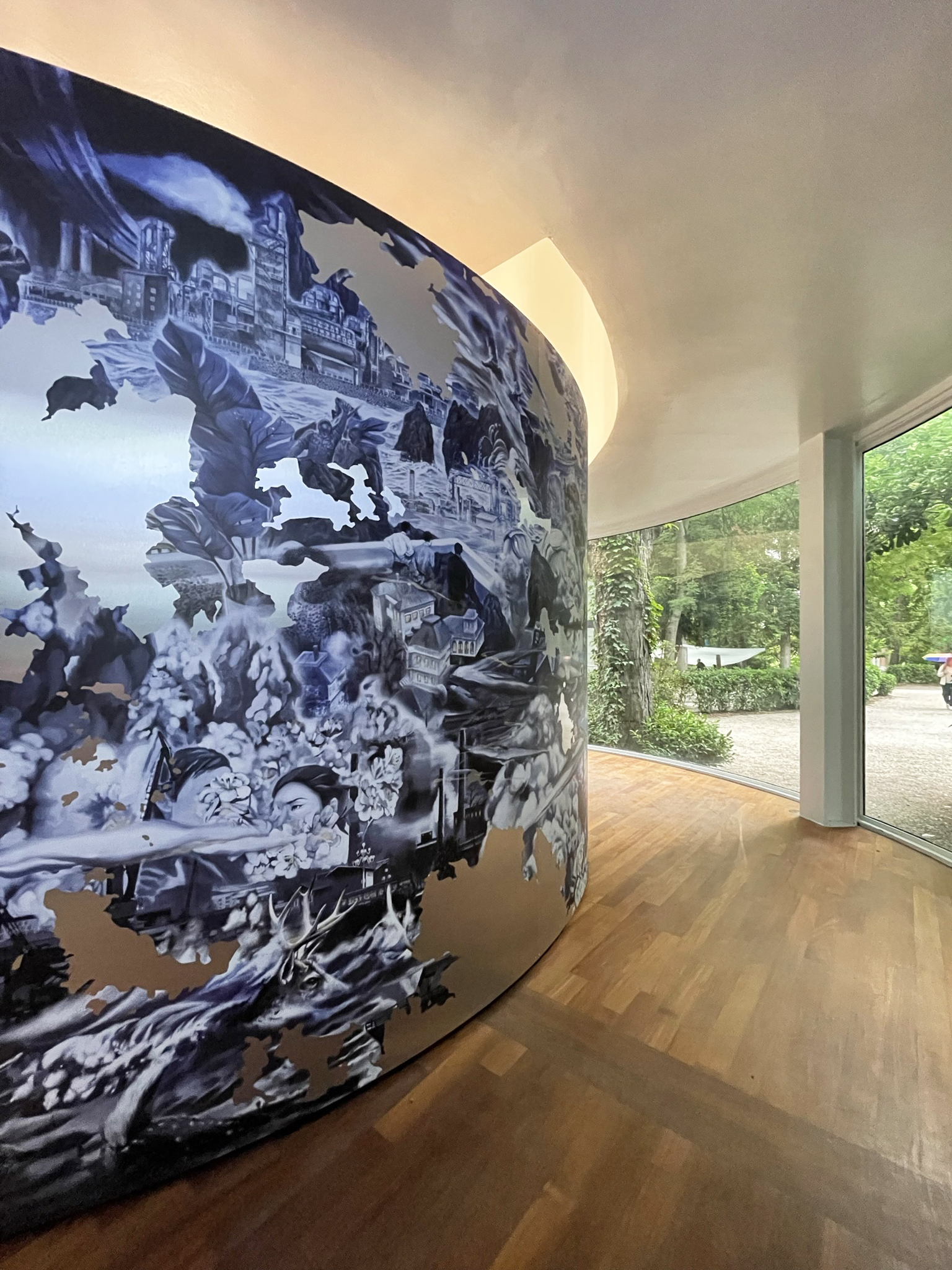
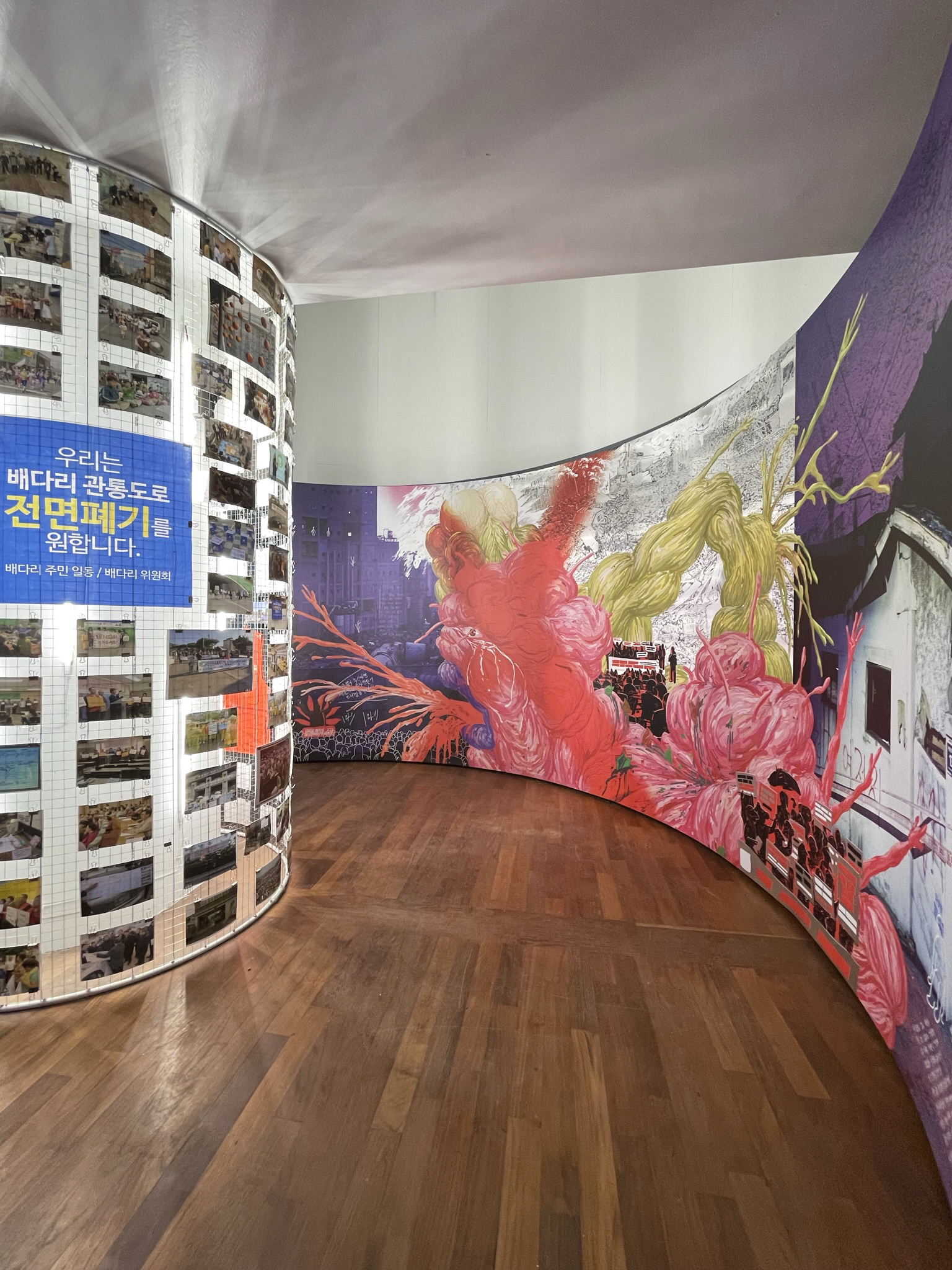
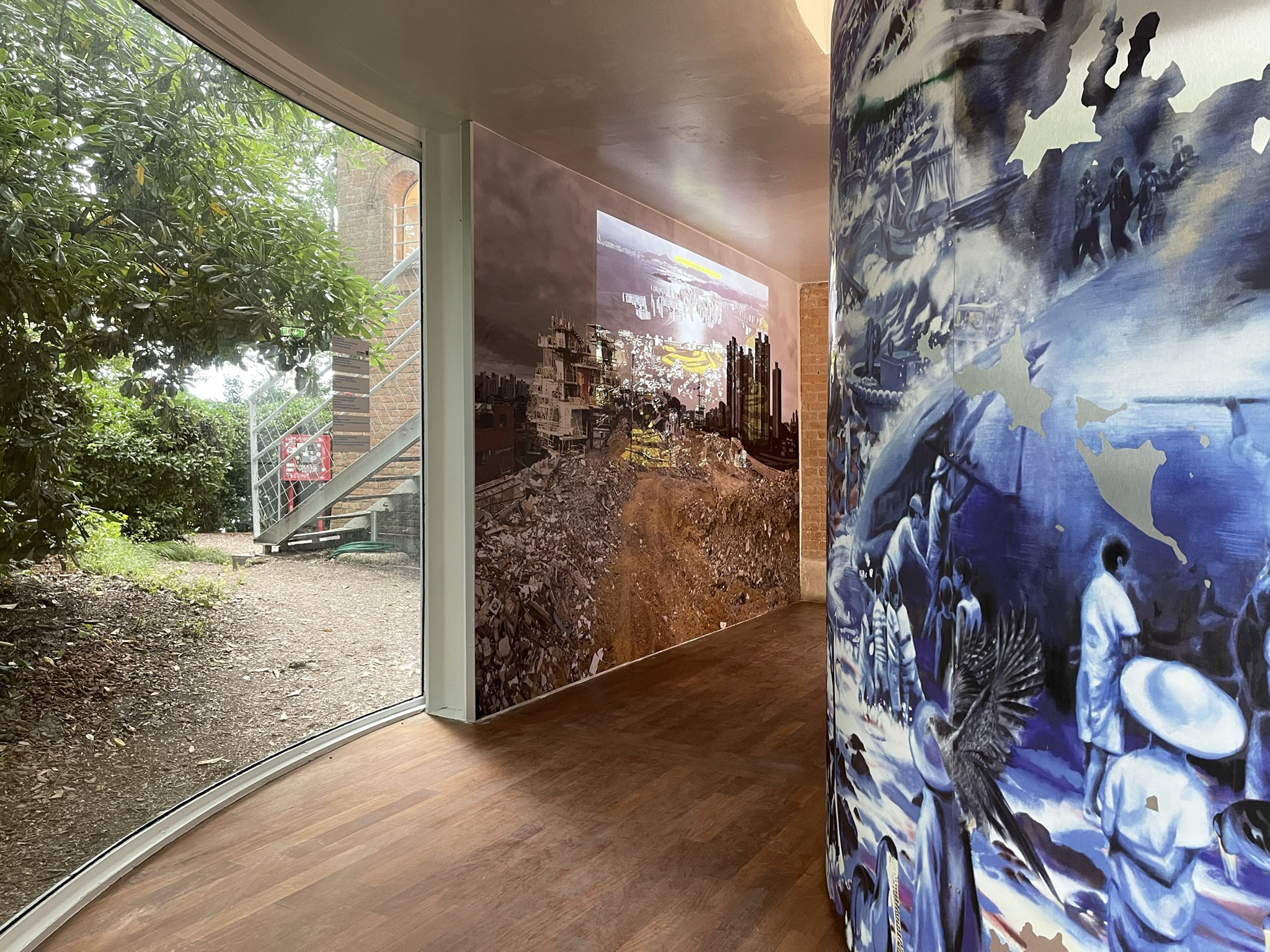
Project Team
Project Lead: Yehre Suh / Urban Terrains Lab
Design/Installation Team : Haein Choi, Ara Song / Urban Terrains Lab
Video Team : Haein Choi, Ara Song, Mimi Tzu Yun Hsu, Beomtaec Lim
Partnering Local Activist: WoonGi Min / Space Beam
Participating Artists: Naomi, Kim Soo Hwan, Beck In Tae, Oh Suk Kuhn
*All text, drawings and photographs by Urban Terrains Lab